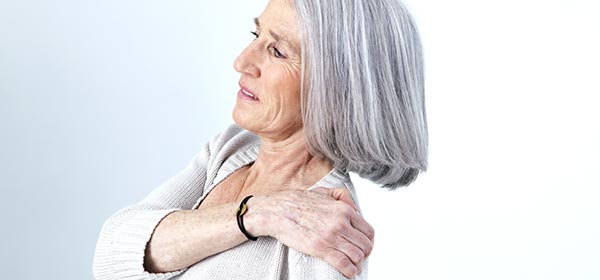Your joints go through a lot of stress to keep you moving. They not only connect your bones, they also have to support your weight. Even though your joints are designed to handle this stress, wear and tear is normal and can result in joint pain.
The joint pain in your knees, hips, elbows, hands and other areas can be caused by a variety of factors, for example, everyday strains and sprains, and conditions such as tendonitis, arthritis and other diseases. Once joint pain has set in, it can be very difficult to continue with your usual daily activities.
Here are seven ways to help alleviate and prevent joint pain so that you can go on with your day.
1. Cold compress
The first time you experience joint pain, it’s important to apply a cold compress to reduce inflammation. Ice therapy is used to decrease blood flow and tissue swelling. Apply an ice pack to the area for 15 minutes every hour on the first day of pain. The following day, apply ice for 15 minutes, four or five times over the day. Remember, never put ice directly onto the skin as this can cause burns.
2. Warm water
A nice, hot bath can do wonders for your everyday joint pain. Warm water eases pressure on joints and muscles, especially those of your knees and hips. While the area is submerged, try massaging it to stimulate blood flow.
3. Diet
How you live plays a large part in how well your joints age. Eating properly and supplying your bones and joints with the right lubrication is an excellent way to maintain strength and prevent deterioration. Maintaining a healthy weight also takes pressure off your bones and joints. Joint-fortifying foods include: salmon, almonds, apples, black beans and broccoli.
4. Exercise
When choosing a type of exercise, go for one that allows you to move within the limits of your pain without causing further pain – especially to knees. Low-impact exercise helps strengthen joints and can have the added benefit of alleviating pain. Try swimming, pilates, yoga and golf.
5. Physical therapy
A physiotherapist can assess, diagnose and work with you to treat your joint pain. They can supply you with advice on how to manage your pain, as well as exercises to strengthen specific areas to help prevent further wear and tear.
7. Medicines
Whether you prefer natural or traditional remedies, taking pain relief medicines can be the difference between getting on with your day and being too miserable to move. Talk to your doctor about natural supplements or prescription medicine for any bone and joint-related conditions you may have.
6. Rest
After all is said and done, rest is one of the best ways to alleviate joint pain. Resting will give your body a chance to restore itself naturally. It’s important to listen when your body is telling you to rest, particularly when the pain becomes too great. At this point, some medication may also be necessary.
Related articles:
Foods for healthy joints
Lifting weights will save your life
Osteoarthritis explained

